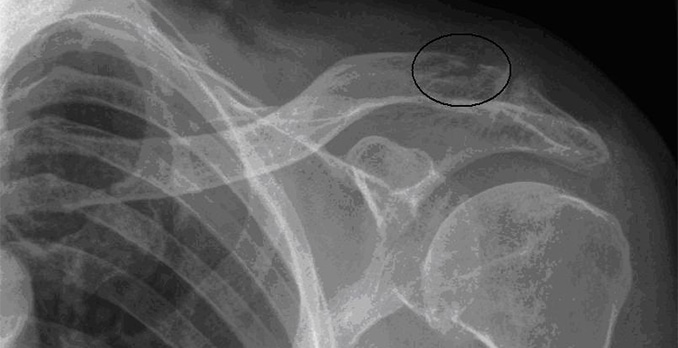
The patient experienced a fracture of the distal clavicle. He was placed in a sling, with instructions to follow up with an orthopedist the following day.
As noted in Wheeless’ Textbook of Orthopaedics,* distal fractures account for 10 percent to 15 percent of all clavicle fractures. Typically, these have a high incidence of non union; most are asymptomatic, with relatively few requiring surgery.
The location of the fracture along the clavicle has a great effect on prognosis. Lateral fractures, such as the one scene here, tend to heal spontaneously and often do not require surgical intervention; medial fractures can be more serious, however.
* Source: Wheeless’ Textbook of Orthopaedics. Clavicle fractures. Available at www.wheelessonline.com/ortho/clavicle_fractures. Accessed August 24, 2009.
Case presented by Nahum Kovalski, BSc, MDCM.
[taq_review]

